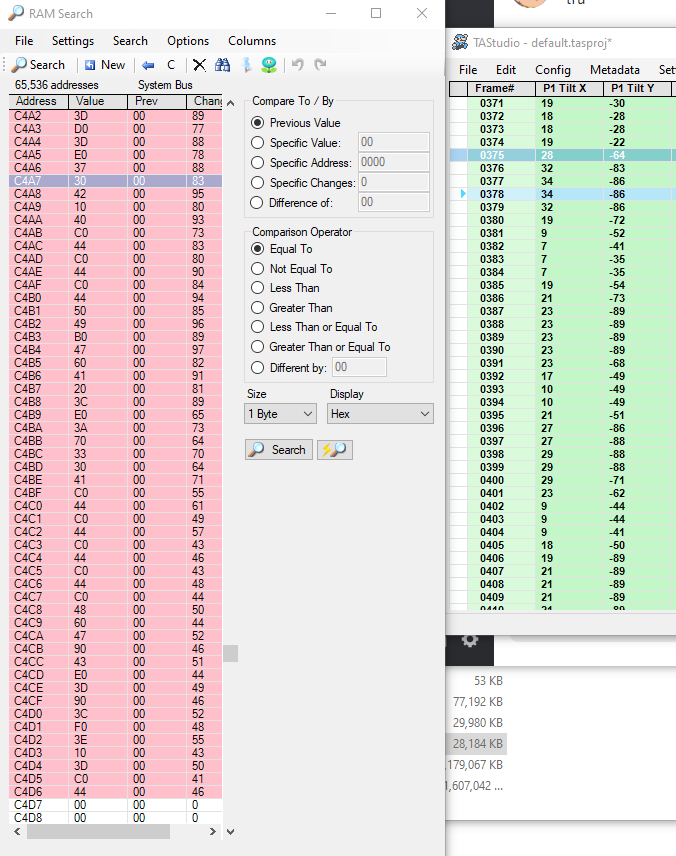Alright, I did some great work towards the brute forcer today.
Put simply, I've been doing testing using a specific sequence from the old TAS, and I was able to successfully output this:
{"I","L","Z","L","L","O","O","Z","T","J"}: 28 ({7,2,0,0,5,3,0,5,4,2})
{"I","L","Z","L","L","O","Z","O","T","J"}: 26 ({7,2,0,0,5,3,3,0,2,4})
{"I","L","Z","L","L","O","Z","T","O","J"}: 25 ({7,2,0,0,5,3,3,1,3,1})
{"I","L","Z","L","L","Z","O","O","T","J"}: 35 ({7,2,0,0,5,2,1,14,3,1})
{"I","L","Z","L","L","Z","O","T","O","J"}: 25 ({7,2,0,0,5,2,1,6,1,1})
{"I","L","Z","L","Z","L","O","T","O","J"}: 26 ({7,2,0,0,0,5,2,8,1,1})
{"L","I","L","L","O","Z","O","Z","T","J"}: 35 ({0,5,1,12,11,2,0,1,2,1})
{"L","I","L","L","O","Z","Z","O","T","J"}: 43 ({0,5,1,12,11,2,1,8,0,3})
{"L","I","L","L","O","Z","Z","T","O","J"}: 38 ({0,5,1,12,11,2,1,0,2,4})
{"L","I","L","L","Z","Z","O","O","T","J"}: 45 ({0,5,1,12,2,11,6,6,1,1})
{"L","I","L","L","Z","Z","O","T","O","J"}: 41 ({0,5,1,12,2,11,6,0,4,0})
{"L","I","L","L","Z","Z","T","O","O","J"}: 59 ({0,5,1,12,2,11,9,1,13,5})
{"L","I","L","Z","L","O","O","Z","T","J"}: 29 ({0,5,1,2,3,7,0,5,4,2})
{"L","I","L","Z","L","O","Z","O","T","J"}: 27 ({0,5,1,2,3,7,3,0,2,4})
{"L","I","L","Z","L","O","Z","T","O","J"}: 26 ({0,5,1,2,3,7,3,1,3,1})
{"L","I","L","Z","L","Z","O","O","T","J"}: 36 ({0,5,1,2,3,6,1,14,3,1})
{"L","I","L","Z","L","Z","O","T","O","J"}: 26 ({0,5,1,2,3,6,1,6,1,1})
{"L","I","Z","L","L","O","O","Z","T","J"}: 27 ({0,5,3,0,5,3,0,5,4,2})
{"L","I","Z","L","L","O","Z","O","T","J"}: 25 ({0,5,3,0,5,3,3,0,2,4})
{"L","I","Z","L","L","O","Z","T","O","J"}: 24 ({0,5,3,0,5,3,3,1,3,1})
{"L","I","Z","L","L","Z","O","O","T","J"}: 34 ({0,5,3,0,5,2,1,14,3,1})
{"L","I","Z","L","L","Z","O","T","O","J"}: 24 ({0,5,3,0,5,2,1,6,1,1})
{"L","I","Z","L","Z","L","O","T","O","J"}: 25 ({0,5,3,0,0,5,2,8,1,1})
{"L","Z","I","Z","L","L","O","O","T","J"}: 36 ({0,0,2,0,2,14,3,11,3,1})
{"L","Z","I","Z","L","L","O","T","O","J"}: 26 ({0,0,2,0,2,14,3,3,1,1})
{"L","Z","I","Z","L","T","L","O","O","J"}: 10 ({0,0,2,0,2,0,1,1,2,2})
I had an upper limit of max 15 frames wait, which is why not every permutation is here. That last piece order, with only 10 frames of delay, is indeed the one used in the old TAS, and the delay numbers seem mostly accurate (the last 2 should be a 1? I'll have to look into that...) (edit: I gave that O a 23 frame count instead of 24. it's perfect now!)
So, I have very high hopes for the future. I'm worried there's something more to the RNG than I have, since the old TAS ends up desyncing on today's BizHawk? But we'll see.
Right now turning your incredible work into proper data form will be a big timesink. And I'm still unsure if I should try to code a way to do the inputs automatically. It'd probably save time in the long run...
 Overall I can't speak to the accuracy of your code, only the range; the range looks to actually be too low. I see 49 max, and 90 -> 0 reaches the 4F that cart can do within 30 degrees. (A higher range would make the 90 -> 0 number get even more extreme, but, it is a superhuman tilt to make in one frame! So maybe that's good that it'd be even more extreme! I don't know!)
So tl;dr: I think there are still three things to work on.
One is, the range may be better off at the 216 exactly. The outliers above 80 subvalue were almost definitely due to flicking, and shouldn't be consistently obtainable. Currently 44/80 requires -78 angle in Bizhawk, and I'm sure I was holding my cart at higher than -78 to get a 44/80 average.
One is the desyncing when flicking from max to neutral and reloading savestates. I am not sure how easy to do, but however many prior inputs are used to calculate new ones, loading a state would have to jump back that many extra frames.
And perhaps the flicking code needs to affect the number more...
Overall I can't speak to the accuracy of your code, only the range; the range looks to actually be too low. I see 49 max, and 90 -> 0 reaches the 4F that cart can do within 30 degrees. (A higher range would make the 90 -> 0 number get even more extreme, but, it is a superhuman tilt to make in one frame! So maybe that's good that it'd be even more extreme! I don't know!)
So tl;dr: I think there are still three things to work on.
One is, the range may be better off at the 216 exactly. The outliers above 80 subvalue were almost definitely due to flicking, and shouldn't be consistently obtainable. Currently 44/80 requires -78 angle in Bizhawk, and I'm sure I was holding my cart at higher than -78 to get a 44/80 average.
One is the desyncing when flicking from max to neutral and reloading savestates. I am not sure how easy to do, but however many prior inputs are used to calculate new ones, loading a state would have to jump back that many extra frames.
And perhaps the flicking code needs to affect the number more... The boosted acceleration helps not just at the start but also after any jump, and probably after any diagonal movement too. We just have to figure out how hard we can cruise control, and if levels that require downward movement can be done still with an automatic recalibration.
Wew I'm making this game complicated. I haven't even mentioned my plans to try to code a brute forcer to find the best possible horizontal inputs when they're needed.
The boosted acceleration helps not just at the start but also after any jump, and probably after any diagonal movement too. We just have to figure out how hard we can cruise control, and if levels that require downward movement can be done still with an automatic recalibration.
Wew I'm making this game complicated. I haven't even mentioned my plans to try to code a brute forcer to find the best possible horizontal inputs when they're needed. I wonder if you could look into some larger 5-line options like this... (Just realized I didn't test that its actually possible to get the pieces there, especially that T on the far right, but I'm sure there's some similar shapes possible)
(If we get too into this, using Discord for real-time chatting could be more useful than swapping replies on the forum here)
I wonder if you could look into some larger 5-line options like this... (Just realized I didn't test that its actually possible to get the pieces there, especially that T on the far right, but I'm sure there's some similar shapes possible)
(If we get too into this, using Discord for real-time chatting could be more useful than swapping replies on the forum here)